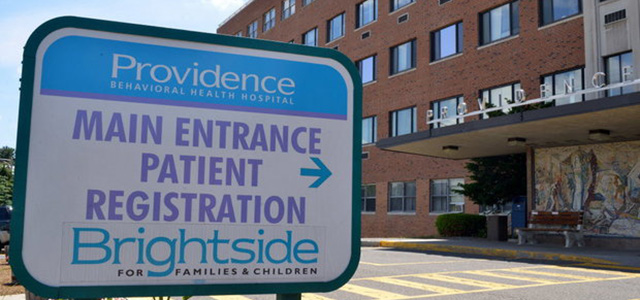News
Two Western Mass hospitals praised in federal reports on preventing workplace violence

SPRINGFIELD - Two hospitals that are part of the Sisters of Providence Health System are highlighted for their safety procedures in a new federal government report, "Preventing Workplace Violence: A Road Map for Healthcare Facilities."
Issued by the Occupational Safety and Health Administration of the U.S. Department of Labor, the report praises the collaborative efforts of Providence Behavioral Hospitalmanagement and its registered nurses, unionized members of the Massachusetts Nurses Association, who made increased worker and patient safety part of their contract.
The government defines workplace violence as "violent acts, including physical assaults and threats of assault, directed toward persons at work or on duty." The OSHA report, which uses examples from health care settings around the country to improve workplace safety, says that "health care accounts for nearly as many serious violent injuries as all other industries combined."
"The joint efforts of labor and management have led to more than a decade of collaboration on preventing workplace violence, a multidisciplinary task force, an open dialogue, a greater emphasis on prevention and de-escalation instead of restraint, and ultimately a decrease in the number and severity of assaults by patients," the report says of efforts at the Holyoke-based hospital.
The hospital was also praised for providing "all medical and nursing staff, mental health workers, and security personnel with nonviolent de-escalation training" as well as making this training "available to workers in support services, such as dietary and housekeeping."
"The hospital pays for hands-on self-defense training for everyone whose work takes them out into the community, and it also offers "community awareness" training that focuses on situational awareness. Managers get specialized training on workplace violence too, including information about the investigation process and other legal matters related to filing workplace violence reports," notes the report which is available to read on OSHA's website.
The report also cites Mercy Medical Center for conducting this year's "full-scale active shooter exercise with three scenarios: gang violence in the ED, a behavioral health escalation incident, and an estranged ex-boyfriend in the maternity unit."
"The hospital coordinated the drill with the Massachusetts State Police and Springfield city police (including their Special Weapons and Tactics [SWAT] team), local tactical EMTs, and affiliated private security companies," the report states.
"Observers included other regional hospitals, school and college security, the Massachusetts Emergency Management Agency, the Homeland Security Council, long-term care facility representatives, and the Air Force Reserves, all seeking to learn and apply information to their own exercises. Evaluators noted participants' situational awareness, law enforcement response, communication, emergency operations, and treatment and triage. The exercise was followed by an open and blame-free evaluation that identified opportunities for improvement."
Providence Behavorial Hospital is also cited in the OSHA report "Workplace Violence Prevention and Related Goals."
Area hospitals have gone into lockdown or partial lockdown in response toexternal threats of violence.
A number of violent attacks have occurred at Boston area hospitals. Earlier this year,a cardiac surgeon died after being fatally shot by the son of a patient at Brigham & Women's Hospital in Boston.
In 2009, a patient at a Massachusetts General Hospital bipolar clinic stabbed his psychiatrist during a treatment session. In 2003, a cardiologist at MGH was fatally shot by a co-worker.
The MNA, the largest union and professional association of registered nurses and health professionals in the state, has a bill pending before the state legislature that would require health care facilities to implement workplace violence plans.
An Act Requiring Health Care Employers to Develop and Implement Programs to Prevent Workplace Violence (H.1687/S.1313) requires hospitals to look at factors like working hours, public access to the area, working in high-crime areas, staffing levels and other factors that affect safety. Hospitals would then need to develop a written violence prevention plan and put measures in place to minimize risks. The bill also requires the creation of an in-house crisis response team to support victims of workplace violence.
The MNA has two occupational health and safety experts on staff who work with practicing nurses on its Workplace Violence Prevention Task Force to develop model contract language to deal with the issue, as well as educate nurses, managers, local law enforcement and policymakers throughout the state about the issue and best practices to reduce workplace violence.
It has a workplace violence questionnaire on its site.
The statistics cited in the road map report from the Bureau of Labor Statistic include the following:
- From 2011 to 2013, U.S. healthcare workers suffered 15,000 to 20,000 workplace-violence-related injuries every year that required time away from work for treatment
- and recovery. Healthcare accounts for nearly as many injuries as all other industries combined.
- Violence is a more common source of injury in healthcare than in other industries. From 2011 to 2013, assaults constituted 10 to 11 percent of serious workplace injuries
- in healthcare, compared with 3 percent among the private sector as a whole.
- Healthcare and social assistance workers experienced 7.8 cases of serious workplace violence injuries per 10,000 full-time equivalents in 2013. Other large sectors
- such as construction, manufacturing, and retail all had fewer than two cases per 10,000 full-time equivalents.